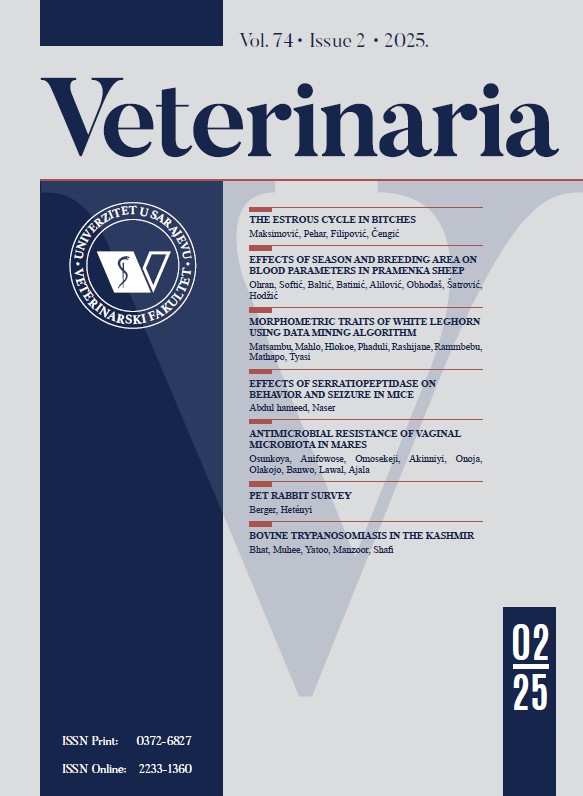Comparative 1H-NMR-based cerebrospinal amino acid profiling in tick-paralyzed and healthy dogs
DOI:
https://doi.org/10.51607/22331360.2025.74.1.48Keywords:
acute flaccid paralysis, biomarker, dog, tick paralysisAbstract
Tick paralysis, caused by neurotoxins released by certain tick species during blood feeding, leads to ascending acute flaccid paralysis (AFP) and can result in severe complications such as respiratory failure and death. Metabolomic profiling of amino acids, particularly using 1H-NMR, is a valuable tool for understanding the mechanisms underlying these conditions. In this study, 92 dogs presenting with clinical signs, including sudden onset of weakness, difficulty moving, and hind limb incoordination indicative of AFP, were evaluated at the Xxxx University Veterinary Faculty Animal Hospital. Based on inclusion/exclusion criteria, 15 dogs were assigned to the Paralysis group and 10 to the Healthy group. CSF samples were collected from all dogs, and 1H-NMR-based amino acid profiling was performed on all samples using an Agilent 400 MHz spectrometer. The Paralysis group exhibited higher body temperature, heart rate, and respiratory rate compared to the Healthy group (p < 0.028). Paralyzed dogs had a shorter capillary refill time (p < 0.008), while healthy dogs had a higher Modified Glasgow Coma Scale (MGCS) score. Regarding amino acid concentrations, the Paralysis group had higher levels of L-phenylalanine, L-isoleucine, L-histidine, lysine, and L-tryptophan (p < 0.038), and lower levels of L-threonine, L-leucine, L-methionine, and L-valine (p < 0.036). These findings suggest that the increased levels of certain amino acids reflect a neuroprotective response to neuroinflammation, while the decreased levels point to neuronal damage and disrupted transfer mechanisms. Overall, this study enhances the understanding of tick paralysis and may provide insights into other non-infectious AFP conditions.

Downloads
Published
How to Cite
Issue
Section
License
Copyright (c) 2025 Erdem Gülersoy, Canberk Balıkçı, Esma Kısmet, İsmail Günal, Adem Şahan

This work is licensed under a Creative Commons Attribution 4.0 International License.







